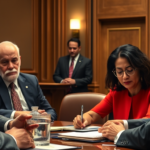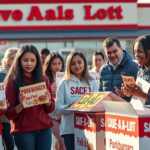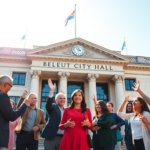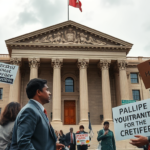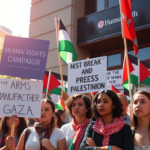LGBTQ+ Representation on Primetime TV Expands with Help from Shows Like ‘Abbott Elementary’
The television landscape is seeing a notable shift with a 4% increase in LGBTQ+ representation across primetime TV, as highlighted in the latest GLAAD report. Shows such as “Abbott Elementary” and “The Last of Us” have been instrumental in driving this change, bringing the total number of LGBTQ characters across scripted broadcast, cable, and streaming programs to an impressive 489.
Reviving Representation: A Renewed Effort
This upswing comes as a welcome development after a two-year decline, though it remains under the peak witnessed during the 2021-2022 year when 775 characters were recorded. However, the progress is tinged with caution as over 200 LGBTQ characters may not return next season due to cancellations or the conclusion of limited series. Shows like “Heartstopper,” “Harlem,” and “Elite” are among those affected, raising questions about the sustained growth of representation.
Sarah Kate Ellis, GLAAD’s president and CEO, emphasized the power of storytelling in her report. “We must double down on telling fair and accurate stories of LGBTQ individuals, especially given today’s cultural and political challenges,” stated Ellis.
A Closer Look at Representation Trends
Transgender representation is on the rise, with 33 characters appearing this year—yet, hope for continued visibility dims as only four of these characters appear on series confirmed for renewal. This highlights a critical area for further development and sustained representation.
Observing platform-based trends, streaming services have shown a rise in LGBTQ+ characters, while representation on traditional broadcast and cable has decreased. Among streaming platforms, Netflix leads the pack with 177 LGBTQ+ characters, and ABC boasts the highest percentage of LGBTQ+ series regulars at 12.9%.
Notably, there has been a modest uptick in characters of color who now represent 51% of the LGBTQ+ spectrum. Unfortunately, only one character living with HIV, featured in “Cris Miró” on HBO Max, will not return.
The Local Impact: Fostering Inclusion in the Community
For communities nationwide, especially in politically and socially vibrant areas like the United States, the ramifications of increased LGBTQ+ representation on TV surpass mere numbers. Shows that depict diverse storylines serve as both mirrors and windows—mirroring the realities and experiences of LGBTQ+ communities while offering a window into their rich, diverse lives for a broader audience.
In places like the Rio Grande Valley, where inclusion and representation are ongoing dialogues, these developments are met with both relief and cautious optimism. Local activist and educator, Maria Henderson, noted, “Representation in media shapes public perception, challenging stereotypes and broadening acceptance. It’s crucial for the LGBTQ+ youth seeing characters that reflect their lives—and not just in fleeting roles.”
Political Backdrop and Challenges Ahead
The increase in on-screen LGBTQ+ representation unfolds against a complex political backdrop marked by the tensions of recent executive orders from the Trump administration that affected transgender and nonbinary communities. Such policies underscore the necessity for representation that extends beyond entertainment into the realm of advocacy and support.
Consequently, this progress in media representation bears significance for advocacy groups and community members alike who continue to push forward in a challenging environment. It reflects a step towards the GLAAD goal of 20% LGBTQ+ character representation by 2025 with a renewed focus on diversity and inclusivity within these portrayals.
Continuing the Dialogue and Looking Forward
As the drive for greater inclusivity continues, local communities and broadcasting networks must sustain their efforts in championing diverse narratives. Keeping LGBTQ+ characters front and center is imperative not only for achieving statistical representation goals but also for the cultural enrichment it brings to audiences.
For those within the community seeking involvement or resources, local LGBTQ+ centers provide ongoing support and engagement opportunities. They remain a valuable touchstone for advocacy and activism, ensuring voices are heard and needs addressed.
In conclusion, the rise in LGBTQ+ representation on primetime TV signifies a meaningful step towards inclusivity, laying the groundwork for future endeavors. It’s a reminder of the power of visibility and storytelling in breaking down barriers and fostering understanding, reinforcing the idea that everyone deserves to see their story accurately and respectfully reflected on screen. As the landscape evolves, Woke News will continue to monitor these developments, providing insights into their impact on local and national scales.


